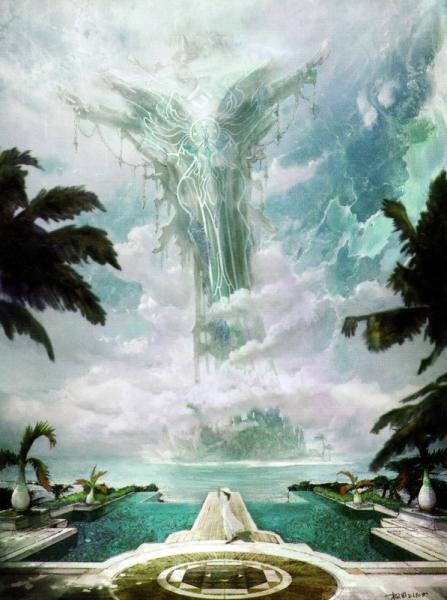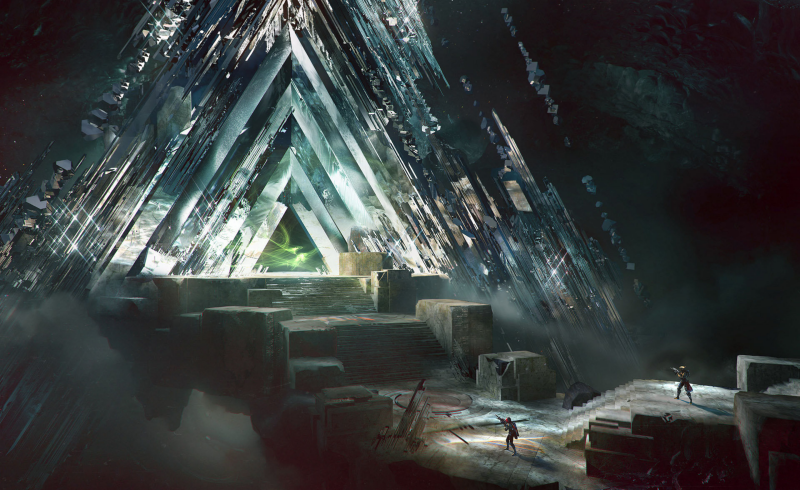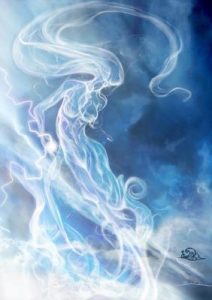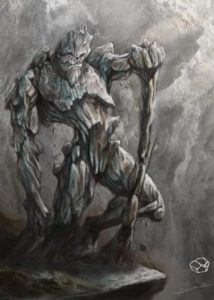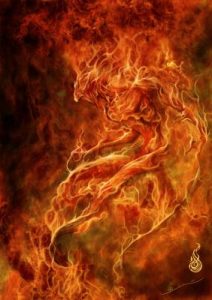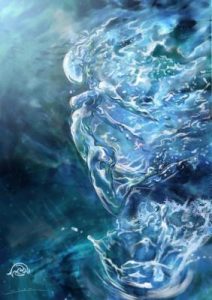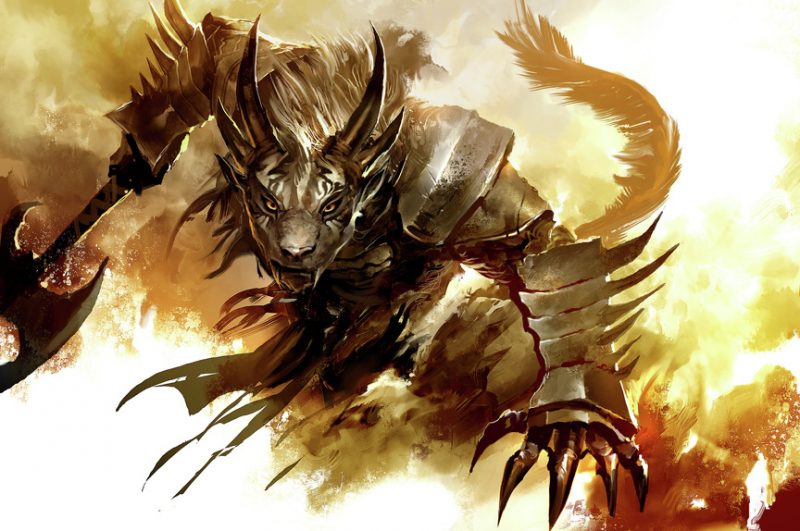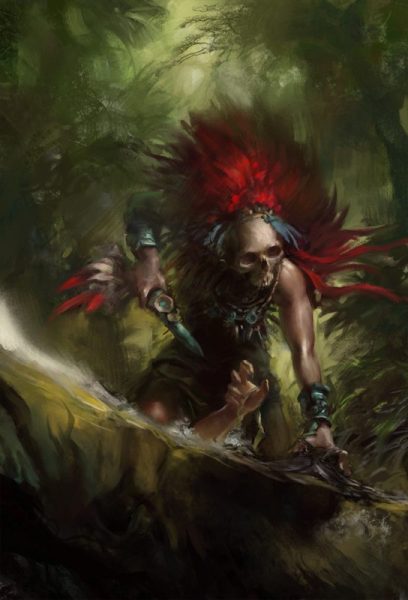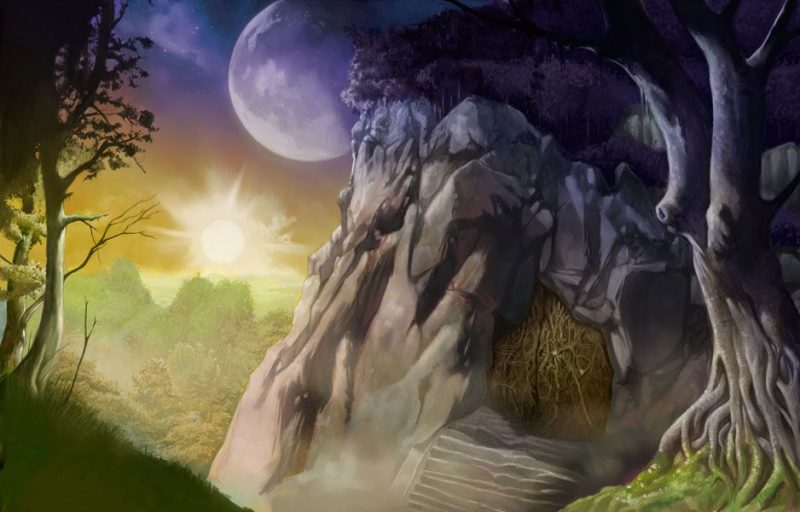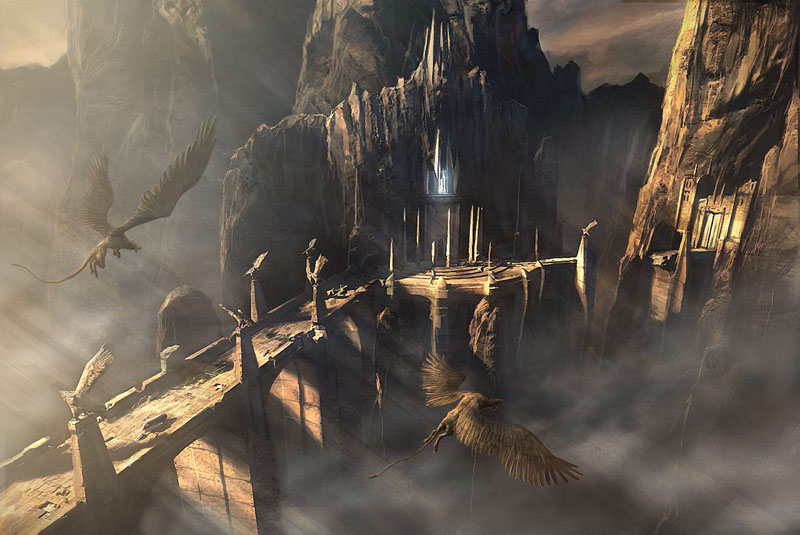About a year ago I’ve sat down and wrote a list of elements that would evoke the atmosphere and style that was really at the heart of my inspiration for the Ancient Lands, which over the many years of working on it had regularly strayed off into other, more generic direction. Writing these ideas down as Project Forest Moon started probably the most productive phase of my whole work on the setting and in hindsight feels like a second moment of the settings inception. When I looked back at the original first outline I made, pretty much all the important elements were already there and the following five years were spend on toying around with various mechanics and researching background information on society and technology. Much of which ended up being discarded as irrelevant and uninteresting for campaigns. Figuring out what doesn’t work and why is a major and important learning experience, but It was only in the last year when I finally learned how much atmosphere is actually much more important than lots of methodical detail.
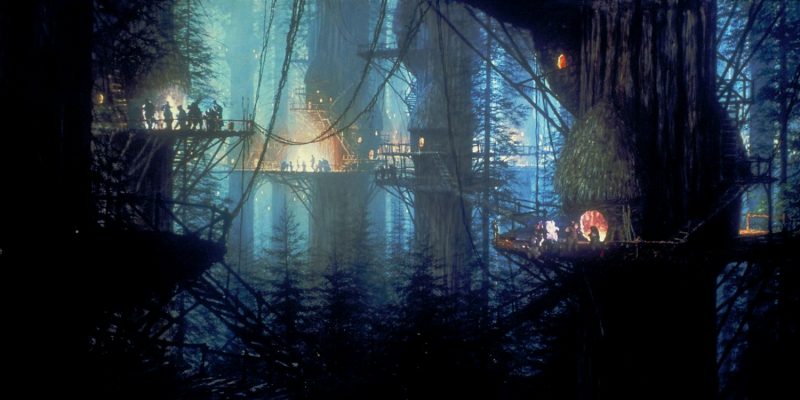
Project Forest Moon turned out to be an astonishing success for myself which lead me to declare the setting as basically complete three months ago. Well, at least so far as having reached the beta stage. And to focus my efforts on the final push to smoothen out the remaining rough edges I made another list with the elements that still are not as prominent as they should be and the ways I want to deal with them.
- That’s no Planet. It’s a Moon! Forest Moon was really just a name referring to one of my major inspirations for the style of the setting. But the idea has grown on me and I totally like the idea of switching the primary moon of the Ancient Lands to be the larger companion of the system. It changes absolutely nothing for the people living in the Ancient Lands, but it adds a little bit to reinforce the notion of it being an alien work very much unlike Earth in many ways. And I also just love the oldschool pulpy vibe that you get from works like the Barsoom series and obviously Star Wars.
- Points of Light: While it comes from the development process of the most controversial edition that was widely seen as a major step in the totally wrong direction for D&D, Points of Light is a very fascinating paradigm for desiging settings, that is actually extremely oldschool but had to my knowledge never been put into words that well. The whole, and really pretty simple idea, is that the campaign world is a mostly untamed world without any real centralized power or organization and overall generally hostile to the mortal races. They have carved out their small islands of relative safety and stability that are only loosely connected by barely maintained roads, but around them these small villages and towns are completely surrounded by monster infested wilderness. I’ve been working under these assumptions from the very beginning, but I feel that I’ve continuously drifted back towards something more conventional. One way to accomplish this is to completely banish the idea of countries from the setting. Geographic areas are defined by having a consistent landscape, like a mountain range, island group, or wetland. But there are no more cultural regions that give the inhabitants some kind of shared identity. Now every island of mortal inhabitation is reduced to being its own unique entity.
- No More Cities: As a consequence of the stronger Points of Light approach I am ditching the concept of city states. These have always been problematic for me as they are meant to not be visited by PCs but always ended up being the focus areas of the worldbuilding process. I will keep the handful that I have, but they are reconceptualized as strongholds of particularly powerful warlords. They are fortified towns under a single leader. No longer a common space for a regional aristocracy.
- Level 0 World: One paradigm I’ve commited myself to some time ago is that every NPC that is not considered important enough to be given a name and individual personality is automatically a level 0 character with no class. NPCs that are fleshed out as individuals only get classes and levels if they have extraordinary fighting prowess or skills or possess magical powers. If their power and influence is purely social then they are still only level 0 NPCs, even if they are very high ranking individuals.
- More Focus on Journeys: I already had boat travel on rivers and coasts on the list the last time but have not actually done much to make this a more prominent feature of the setting. With a setting like this, the trip between town and dungeon is not enough to cover the wilderness aspects of a campaign. The journey between towns should be an adventure in itself. This is one aspect where I have to put some more thoughts into mechanics and it’s less of a worldbuilding issue. However, the connections to the river and overland path network is one important element in the description of settlements. This also includes creating some more river monsters.
- More really big Beasts: Part of the concept is that the wilderness is dangerous and terrifying. With a more open ended, site-based approach to adventures and the ability to retreat from encounters or avoid them, I think I can get away with populating the world with more beasts that will be too tough to fight head on for most parties. More dragons and rancors.
- The Fey Folk: There are three races of humanoid fey in the Ancient Lands. Naga, shie, and racksha. The naga already have a very prominent role in many aspects of the setting, but the other two are still mostly concept that exist more or less in isolation and are not really connected to anything yet. The shie are the creators of the Tower Builder and Tree Weaver types of ruins, but the raksha are more of a character design than a setting element so far.
- Rituals: The Ancient Lands is conceptualized as an animistic world but so far there is little specific about how this element can be included in actual play. The consultation of shamans and witches and the use of elaborate warding and divination rituals needs to become more fleshed out. Given that divinations in the Ancient World work by predicting the crossing of paths of people with intersecting or conflicting goals rather than stating predetermined outcomes, I see a lot of potential here.
- Sites of Power: I need to put a lot more thought into magical glades and springs that work as powerful stationary magic items.
- Druids as Monks rather than Templars: My idea of the Druids was as an organization of shamans that work together to fight the spread of demons and sorcery but I realized that this actually makes them not very interesting as NPCs. If they are the best at fighting sorcery, why would they have to work together with player characters? It’s basically the old Jedi Problem, where one character type is the hero by default and everyone else really only gets in the way and should try to stay out of harm. Instead I want to reconceptualize druids as scholars who have the knowledge to fight sorcery but require warriors to actually do the heavy lifting and clear a path for them.
- No Lizardmen: I already had lizardmen scrapped once but got them back as part of the setting some time in the last year. But now I realize that all my cool ideas for a lizard race have already been incorporarted in jungle elves and the naga slaves serpentmen. While a neat idea, the lack of a decent concept means the setting will probably be better of for the time being. Not having mortal lizardmen actually frees up a spot for an idea I have for lizard spirit-ogres as a fourth race of the fey folk.

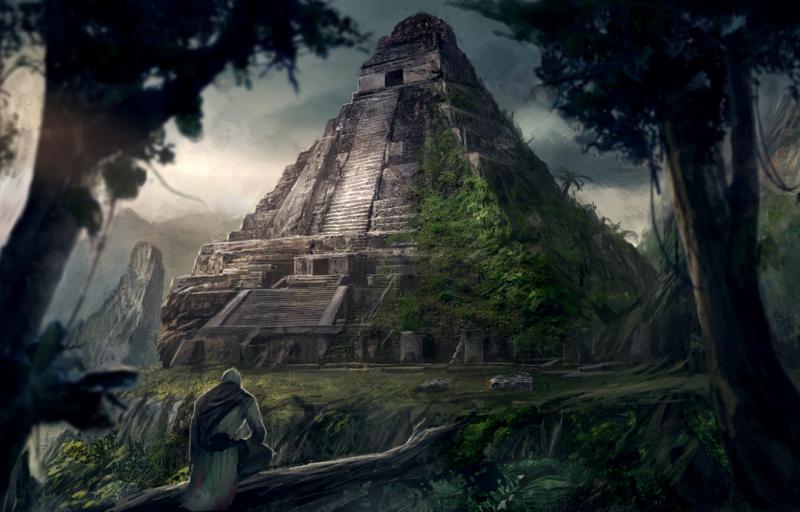
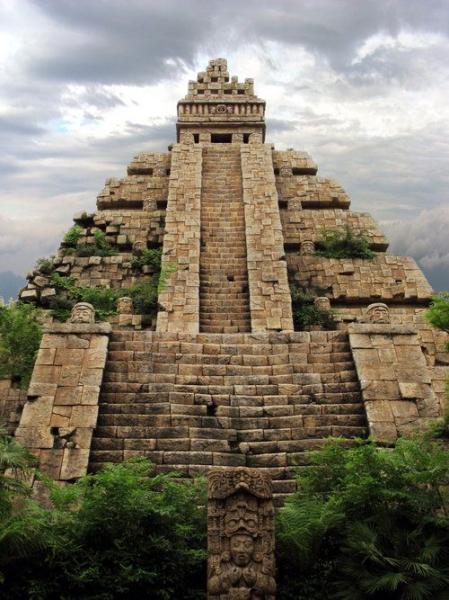 Tower Builders
Tower Builders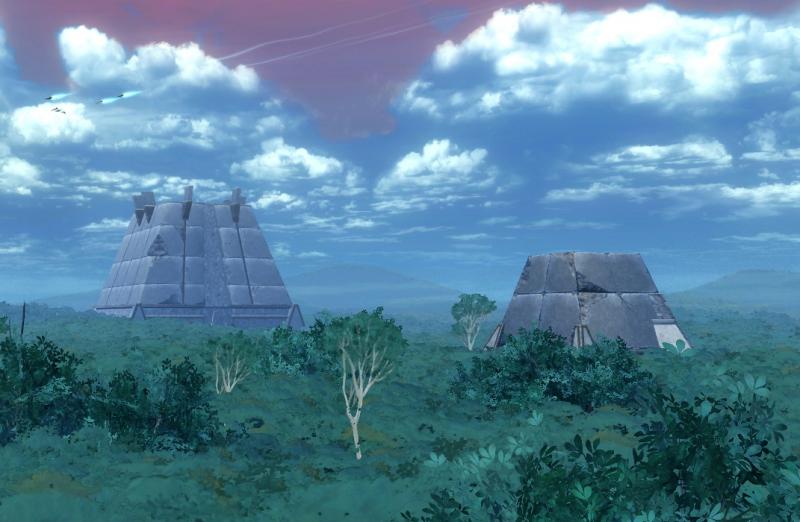
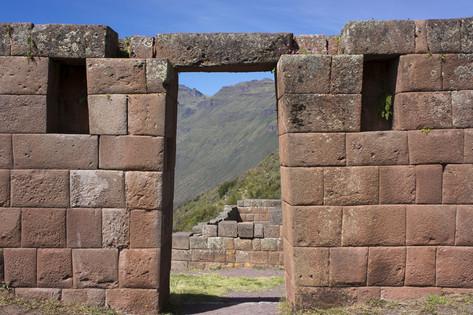 Rock Carvers
Rock Carvers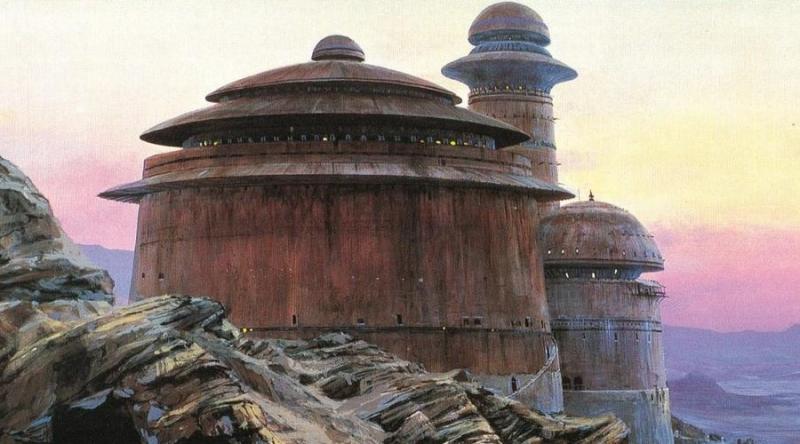
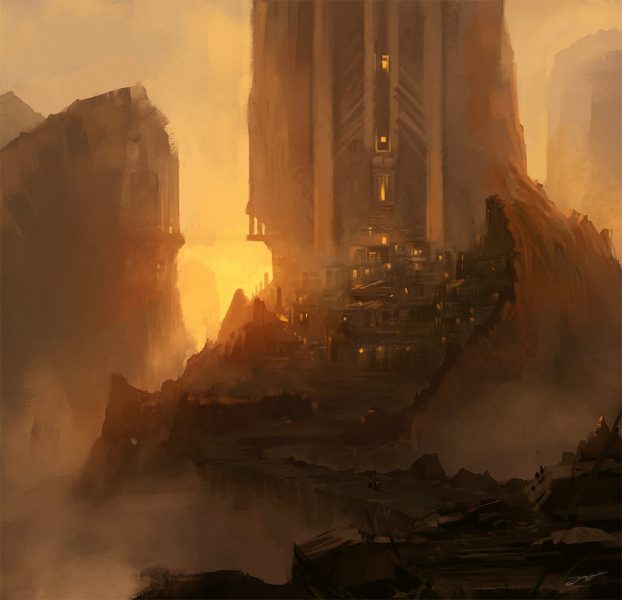 Tree Weavers
Tree Weavers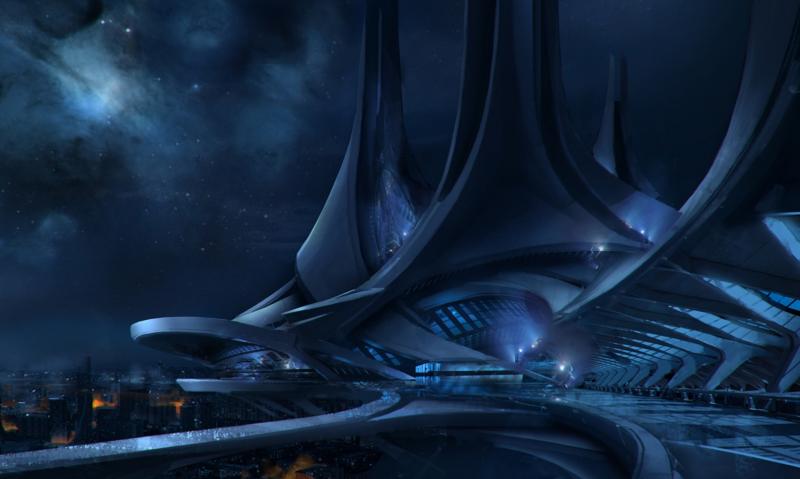
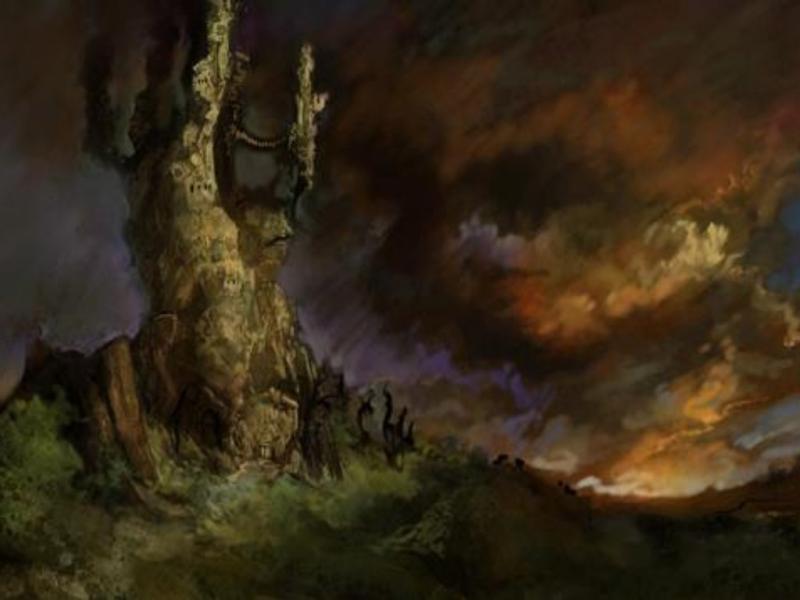 Glass Makers
Glass Makers